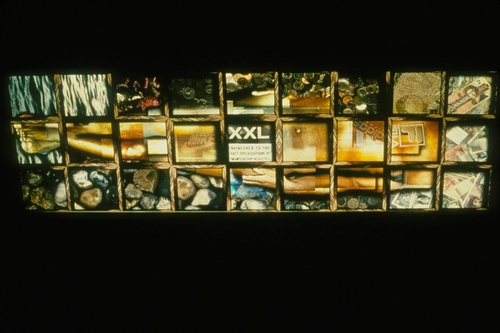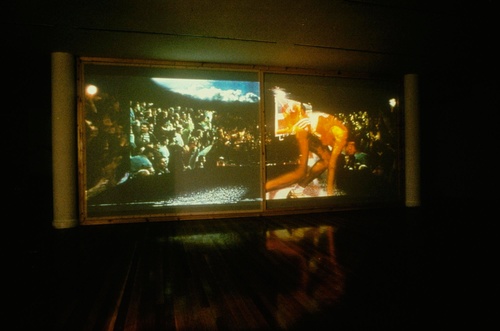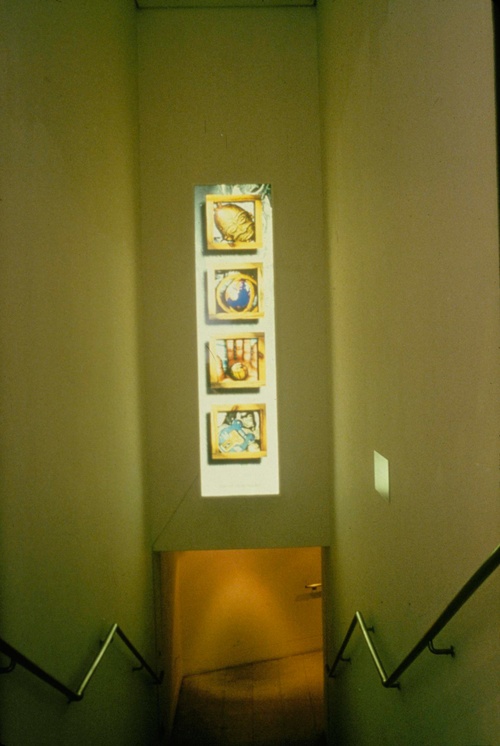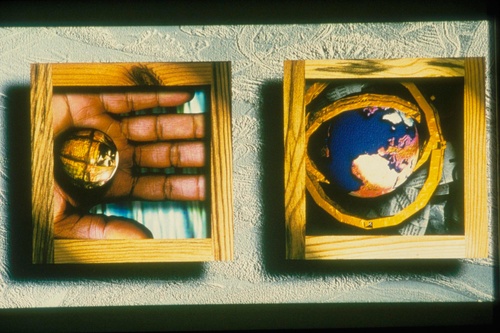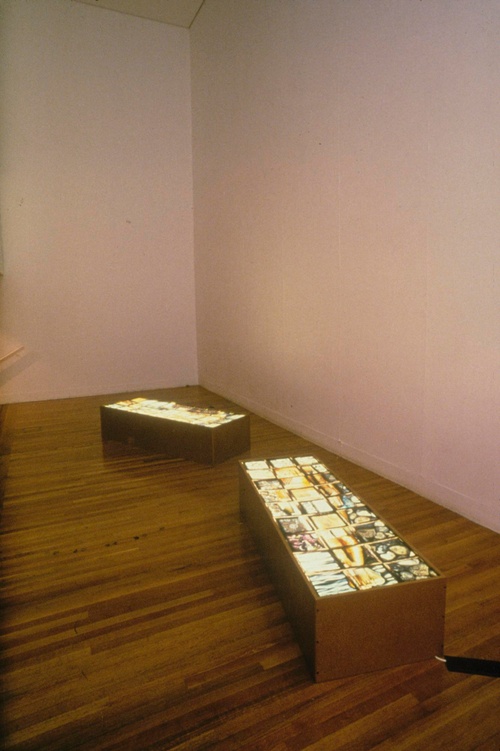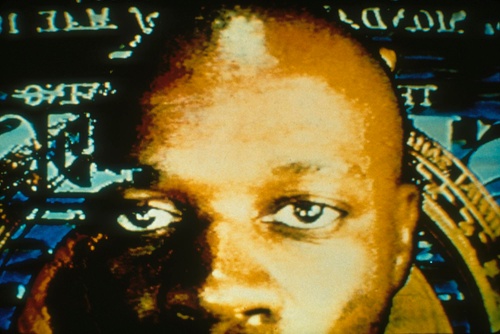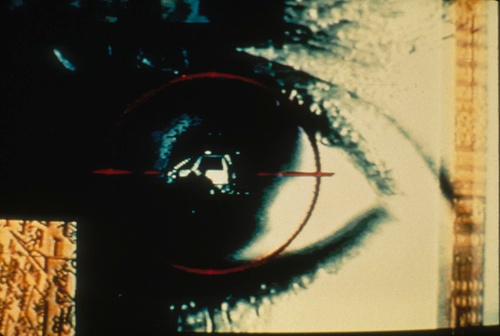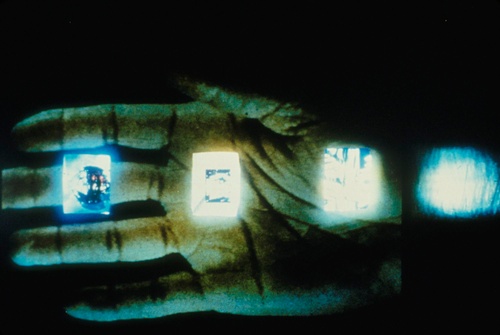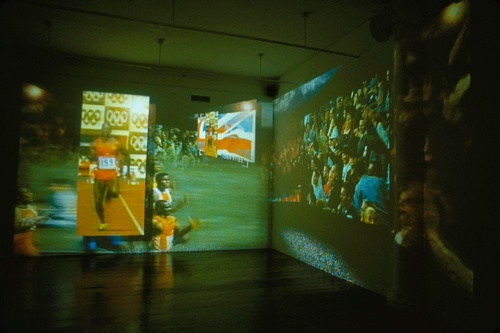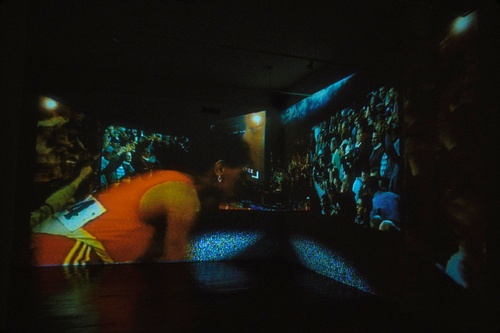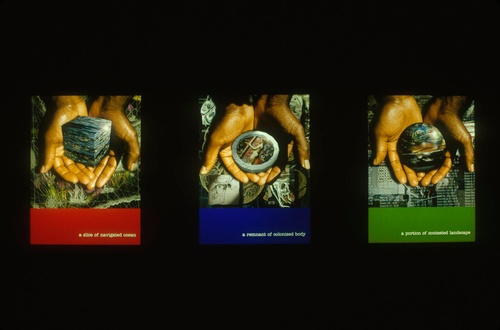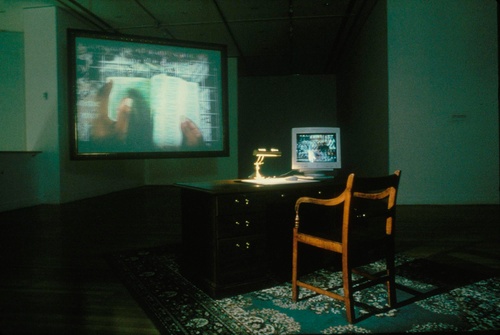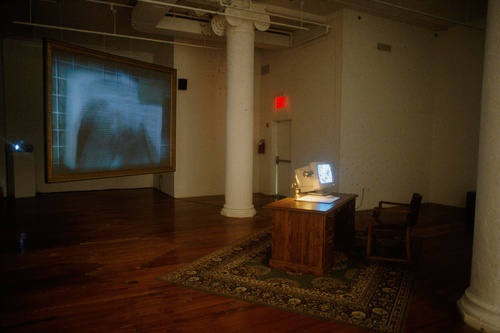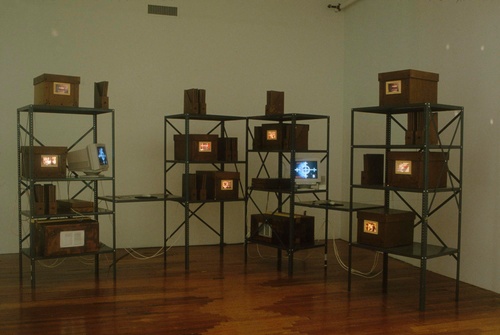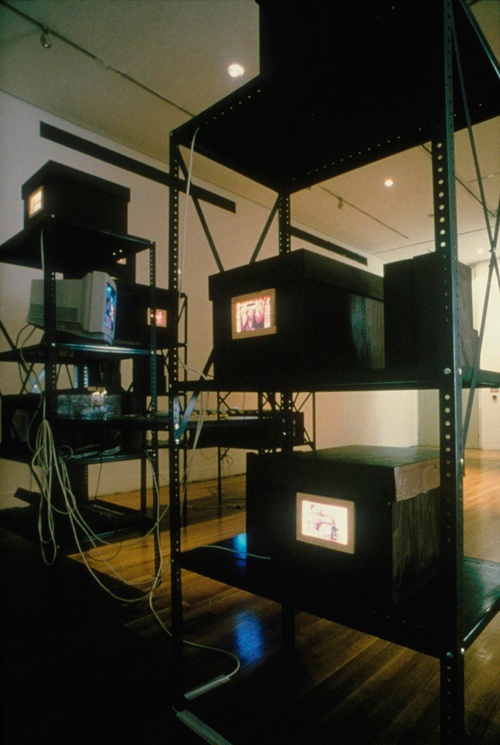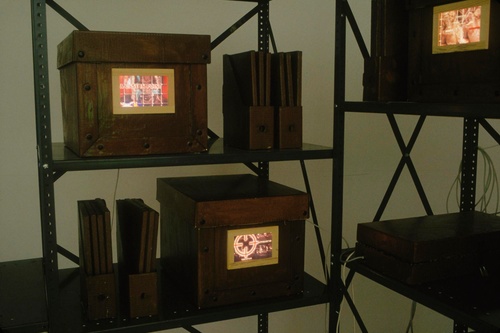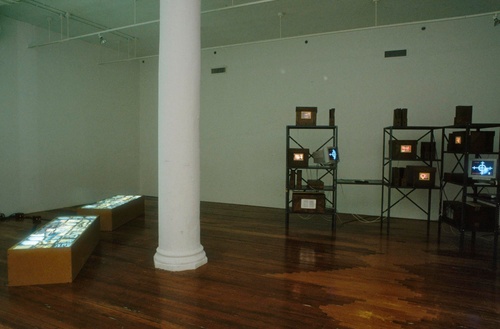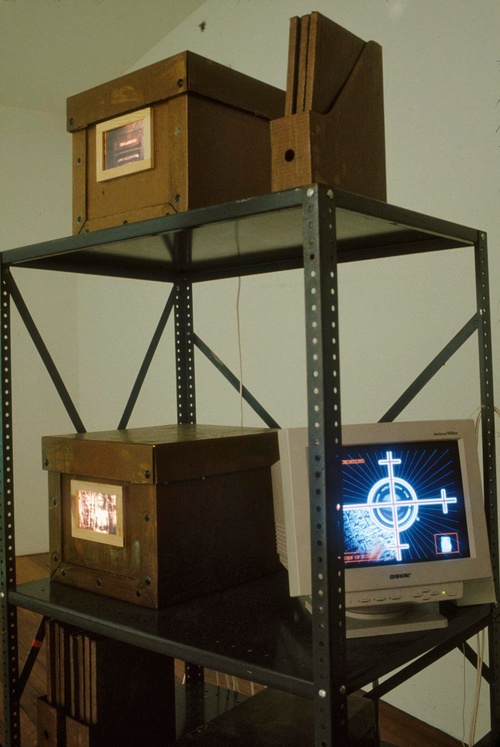Keith Piper: Relocating the Remains
Keith Piper: Relocating the Remains
This exhibition and accompanying CD-ROM comprise the first mid-career survey in the United States of the work of British artist Keith Piper (b. 1960). Consisting of three separate yet interconnected video-based interactive installations designed for the exhibit, “Relocating the Remains” does not provide a chronological overview. Instead, as the title suggests, each environment reconstitutes parts of individual pieces Piper has created over the past decade, combining them to form new configurations that enable the artist to update the images and sounds as an ongoing re-mix of his oeuvre. Taken as a whole, the exhibition is a synthesized journey through digital layers of history, text, and fragments of media and popular culture; along the way, questions are raised about the impact of race and history on contemporary notions of identity and culture.
The fluid, open-ended nature of “Relocating the Remains” reflects an underlying philosophical concern in Piper’s art. For him, the shifting borders of video- and computer-based art permit the unfolding of a narrative based on collective memory as well as an implicit critique of linear narrative. The complex, evocative editing at the core of Piper’s work are part of a larger artistic undertaking–a struggle to articulate a discourse based on a frank questioning of identity carried out in opposition to inequities imposed by society.
Born to a working-class family of Caribbean descent and raised in and around Birmingham, England, Piper was first attracted to art as a response to the industrialized landscape of his childhood. While a student at Lanchester Polytechnic, Piper joined Eddie Chambers and other artists to form The BLK Art Group, whose provocative exhibitions in 1981 and 1982 challenged the hegemony of British modernism as the symbol of a national artistic culture. Before he had even completed his formal studies (he received an M.A. in 1986 from the Royal College of Art), Piper’s provocative use of appropriated images and critical texts drew attention. One of his best-known pieces from this pre-video period, The Black Assassin Saints (1982), juxtaposes graphic images of Nigerian Ife masks with descriptive texts about the four disenfranchised subjects of the work.
In 1986 Piper produced his first multi-media installation, The Spirit Will Not Descend Without Song, incorporating music within a sculptural environment of painted figures, written texts, and brightly colored fabrics. Piper’s shift to computer-based media and technology in the late 1980s led him to reconsider the physical and philosophical limits of his artistic practice. The resulting cut-and-mix aesthetic in Piper’s videos has made for more personal and subjective image-relationships in his work, leaving the associations and interpretations largely to the viewer’s imagination.
The first room of “Relocating the Remains” is an environment titled Unrecorded Histories. At the center of a darkened space, the formal placement of an antique desk on an ornate carpet evokes authority and hierarchy. A network of projection screens displays fragments from three of Piper’s earlier installations: A Ship Called Jesus (1991), Trade Winds (1992), and Go West Young Man (1987). Rather than passively view an edited selection of these works, visitors are invited to make the selections themselves, repeating or skipping fragments according to their own impulses. Nevertheless, each of these works takes on a particular shape and character. A Ship Called Jesus views the slave trade and African Diaspora through the opaque lens of Christian imagery while providing a kaleidoscopic intermingling of historical documentation, Bible quotes, family photographs, and current politics. In Trade Winds, Piper delves more deeply into slavery but also presents a constant and direct examination of the effects of colonization and industrialization on the human body, which is treated both as commodity and as vehicle of poetic expression.
Unclassified, the title of the second room in “Relocating the Remains”, refers to the metal shelves and filing boxes that imbue the space with an air of classification and ordering and conjure up an appearance of rationality and scientific process. But this effect is undermined by the illustrated labels on the storage boxes, each containing a different image from the video works on view at a pair of adjacent computer stations. The two previous works “contained” in Unclassified are Surveillances: Tagging the Other (1992) and The Exploded City (1994). In the clips from these two videos, Piper develops the notion of the contemporary city as a site of high-tech surveillance and control, in which the individual is reduced to an infinitesimal level within enforced hierarchies of status, social order, and containment. Adjoining this installation is a pair of sculptural light-boxes, entitled Cargo Cultures (1997), arranged as coffin-scaled plinths on the floor. The interwoven photographic images on the light-boxes explore the geography of the black body as alternately a vessel, a commodity, and a symbol of colonial expansionism.
In the third room, Another Arena, Piper has expanded on perhaps his most famous single work, Step into the Arena (1991), which articulates the role that sports play in notions of territory and identity, focusing on the black athlete as a symbol of national aspirations. For Piper, there is a contradiction between the adulation of black sports heroes and heroines, particularly for their feats of strength, speed, and/or endurance, and society’s need to contain such achievements within a highly limited range of endeavor. A handful of interconnected works, including The Nation’s Finest (1991), Transgressive Acts (1993), and Four Corners (1995), are brought into the double-projector installation to help convey the fact that a figure like Muhammed Ali can inspire both exultation at his athletic triumphs and embody a threat to social order when he openly questions the system that embraced him.
The highly animated spatial configuration of Another Arena makes it the culmination of the exhibition, but it also points us back to the preceding room-environments as a way of reiterating the consistency and multi-layered nature of Keith Piper’s work. As a survey exhibition that is also an extended work itself, Relocating the Remains offers a broad look at the long-term impact new media technologies are already having, both in terms of how we build and maintain our world views and the transformation of exhibition spaces into open-ended and interactive environments.
The exhibition, catalogue, and CD-ROM for “Keith Piper: Relocating the Remains” have been organized by the Institute of International Visual Arts (inIVA), London.
